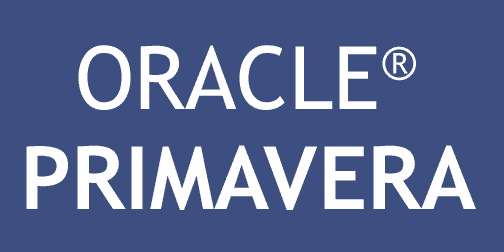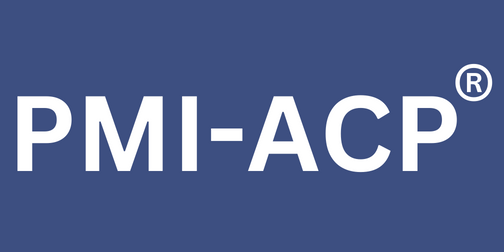
Top Agile Project Management Practices to Improve Efficiency
Posted On July 2, 2024 - 16:34 PM
Traditional project management techniques frequently fail to satisfy the demands of quickly changing needs and client expectations in today's fast-paced corporate environment. Agile project management techniques, which emphasize adaptability, teamwork, and continuous improvement, have arisen as a response to this problem. Teams may increase productivity, provide value iteratively, and adjust to changing project requirements by embracing Agile concepts and implementing best practices. We will examine the best Agile project management techniques in this blog, which can boost productivity and lead to project success.
Overview of Agile Project Management
Agile project management is an iterative, collaborative methodology that prioritizes client happiness, flexibility, and quick delivery of high-caliber goods and services. Agile approaches, in contrast to traditional waterfall processes, divide projects into smaller milestones and promote frequent feedback, allowing teams to react swiftly to shifting needs and provide stakeholders with additional value.
The Best Agile Project Management Techniques for Productivity
1. Empowering the Team
-
An essential component of Agile project management is empowering team members through the encouragement of accountability and autonomy.
-
Team members become more involved, motivated, and able to lead projects to success when they are allowed to take initiative and make decisions for themselves.
-
Teams with more empowerment are better able to work together, solve issues quickly, and produce outcomes that are on par with or better than expected.
2. Collaboration and Communication That Works
-
Effective and prompt communication is critical to the success of Agile project management. Frequent meetings, such sprint planning sessions and daily stand-ups, keep team members informed, motivated, and in sync with one another's project objectives.
-
Collaboration may be streamlined and communication can be improved even further by utilizing platforms and tools for collaboration.
-
This allows teams that are spread out to collaborate easily and efficiently share expertise.
3. Setting Priorities and Dividing Tasks
-
Agile project management places a strong emphasis on dividing projects into manageable tasks or user stories and prioritizing work based on value.
-
First addressing the most important features or needs allows teams to iterate on their deliverables continuously and provide incremental value early on.
-
The job may identify dependencies, a constant pace can be maintained, and shifting priorities can be handled more skillfully by breaking the job up into smaller chunks.
4. Continuous Delivery and Integration (CI/CD)
-
Teams can decrease time-to-market and increase project efficiency by continuously integrating, testing, and deploying code by putting CI/CD methods into practice.
-
Build-test-deploy processes are streamlined by automation tools and pipelines, which help teams release features more frequently, detect and fix problems early, and improve code quality.
-
Additionally, CI/CD techniques promote cooperation, enhance feedback loops, and cultivate a culture of ongoing development.
The following are some main advantages:
Many advantages to using agile project management techniques for increasing productivity and achieving project success.:
Faster Time-to-Market:
-
Teams can produce incremental value more frequently and early thanks to agile approaches.
-
Teams may focus on providing the most important features first by breaking down projects into smaller iterations, which enables a faster time to market and a quicker reaction to client expectations.
Increased Flexibility and Adaptability:
-
Agile methodologies welcome change and enable teams to swiftly adjust to changing client demands, market conditions, and needs.
-
This adaptability lowers the chance of delivering out-of-date or superfluous features by ensuring that initiatives remain relevant and in line with corporate goals.
Enhanced Teamwork and Communication:
-
Agile project management places a strong emphasis on consistent teamwork and communication with stakeholders and clients.
-
This cooperative strategy guarantees that all parties are on the same page, knowledgeable, and working toward the same project objectives, which boosts productivity and minimizes miscommunication.
Enhanced Customer Satisfaction:
-
Teams can meet the needs and expectations of customers at every stage of the project lifecycle thanks to iterative delivery and continuous feedback.
-
Agile approaches boost the likelihood of delivering products or services that meet customers' requirements and raise overall customer satisfaction by involving customers early on and taking their comments into account.
Learning and Continuous Development:
-
Through frequent retrospectives and reflections, agile project management fosters a culture of learning and continuous development.
-
With the help of this iterative feedback loop, teams may pinpoint problem areas and make necessary adjustments in later iterations, increasing productivity and improving project performance over time.
How it will help in 2024
In 2024, agile project management techniques will still be useful and important for many reasons:
Adaptability to Changing Technologies: In the upcoming years, the rate of technical breakthroughs will probably continue to pick up speed. Agile project management techniques, with their emphasis on adaptability and change-responsiveness, will make it possible for businesses to quickly and effectively adopt new technology and emerging trends.
Quickly Changing Customer Needs: The expectations and needs of customers are ever-changing. Agile approaches, which prioritize iterative delivery and frequent client input, will assist companies in adapting to the shifting demands and preferences of their customers in 2024 and beyond.
Enhanced Cooperation and Distant Work: The COVID-19 epidemic has brought attention to the value of collaboration tools and distant work. Agile methods, which encourage efficient communication and teamwork in geographically dispersed teams, will be essential in helping companies adjust to the expanding remote work trend and use technology for productive collaboration.
Accelerated Time-to-Market: In 2024, the capacity to provide goods and services promptly will still provide a competitive edge. Agile concepts, such as segmenting work into manageable chunks and setting priorities according to value, will keep helping businesses get a competitive advantage and accelerate time to market.
Efficiency and Cost Optimization Will Always Be Needed: Businesses will always look to increase efficiency and minimize expenses. In 2024, agile project management will still be a major force behind cost-saving measures and efficiency gains due to its emphasis on waste elimination and continual development.
In summary
Agile project management techniques provide a versatile and iterative method for boosting teamwork, increasing project efficiency, and providing stakeholders with value. Organisations can apply Agile principles to adapt to changing requirements, promote continuous improvement, and achieve project success by prioritising work, empowering teams, and accepting change. Teams may improve productivity, optimise processes, and deliver projects that meet or surpass client expectations in today's fast-paced business environment by putting the best Agile project management techniques covered in this blog into practice.
Check out this blog : The Future of Project Management


















